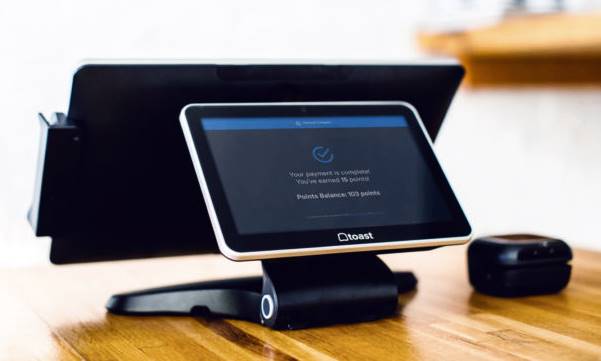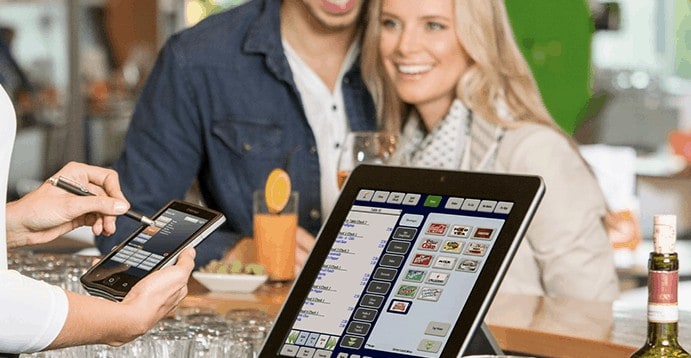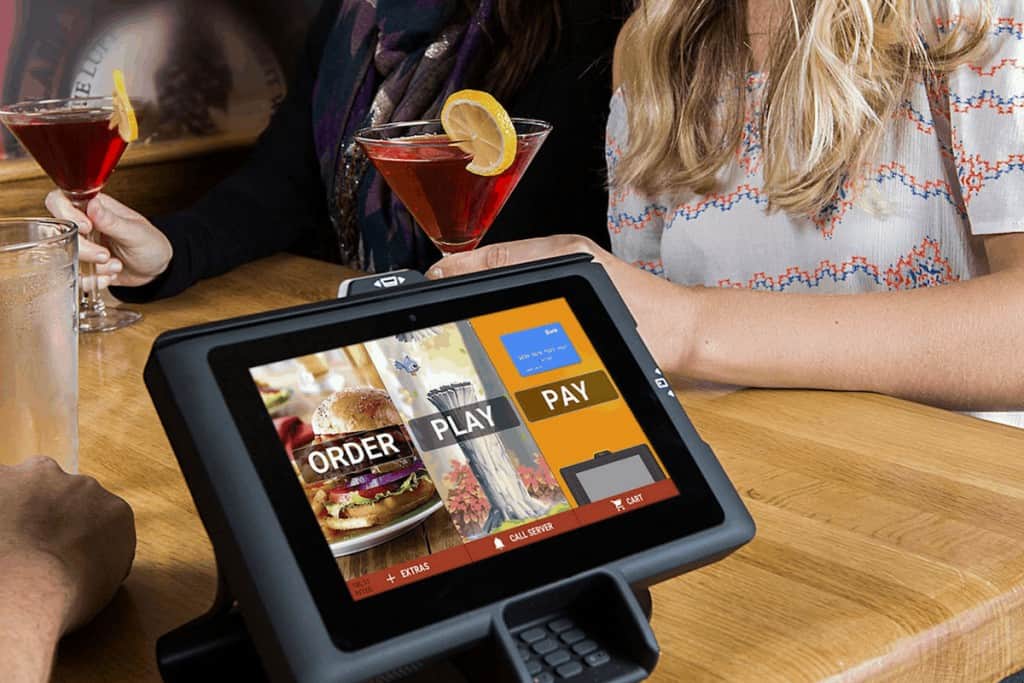
Among the many restaurant POS systems on the market, Toast and Aloha are two of the most popular solutions. Toast, built specifically for restaurants, has all the point-of-sale, delivery, online ordering, and marketing features you need. Unlike NCR, Toast allows guests to order directly from your restaurant with no fees. The Toast Now™ module allows for contactless delivery and is a one of a kind, on-demand delivery solution.
Aloha by NCR is no stranger to the restaurant industry either. With the most durable and stable hardware units (made by NCR themselves), you’ll never lose a transaction. NCR is a robust, end-to-end restaurant management platform. With mobile order ahead, third-party delivery, chatbots, kiosks, and tableside ordering features, the POS system is adaptable and customer-focused.
In our research for this comparison of Toast vs. Aloha, we found that while Toast offers better technology and more detailed reports and features, Aloha is easier to train on. Since NCR offers a suite of other restaurant software like NCR Silver, more than 100,000 restaurants use their products. This means lots of restaurant employees know their system. Lowering the cost to train can mean more time catering to your customers.
For integrations, Aloha’s POS can integrate with more than 200 third-party partners, while Toast lists less than 80 integrations, but cover anything from delivery, to timecards, to inventory or reporting apps. Unless you’re looking for a specific integration, both are satisfactory in this category.
For pricing, Toast charges $69/month for its initial ‘Starter’ Plan for the software but does not mention its processing fees. On the other end, NCR does not list a monthly software cost but charges 2.6% per swipe + $0.10 per transaction.
While both systems aren’t ideal for the smallest of operations, mid-sized businesses should opt for Toast. Based on our research, NCR Aloha is used by larger restaurants with a high monthly turnover. Let’s take a deeper look at each provider’s features, pricing plans, and hardware components.
Toast vs. Aloha: Side-by-Side Comparison Summary
 |
||
|---|---|---|
| POS Software Starting Price | ||
| Free Trial | ||
| Free Demo | ||
| Cloud-Based | ||
| System Accessibility | ||
| Customer Support |
Toast vs. Aloha: POS System Comparison
Because Toast and Aloha are both restaurant POS systems, they include many features that other systems do not. Below, we cover those as well as general POS features required by all types of businesses.
We provide side-by-side comparisons of various system attributes. We then let you determine which system would be best for you, based on your unique business requirements.
Food Ordering Capabilities
One of the most important variables to look for in restaurant POS systems is ordering capability. Does the system support online ordering? What about takeout and delivery orders?
Toast Ordering Capabilities

Toast’s ordering functionality is not included in its core POS software. Instead, you must pay extra for these features, which are included as an add-on module.
This is a point of contention for many of Toast’s customers. We understand why this would cause friction. Toast is considered to be one of the best restaurant POS systems on the market. One would expect these features to be included out of the box.
However, Toast’s tableside ordering feature is strong, and the vast majority of users are overly satisfied with it.
Toast offers a variety of hardware options and tools that can help restaurants streamline operations and increase revenue. Its online ordering capabilities provide a convenient, contactless way for customers to order from your restaurant with delivery service or pickup. It also helps restaurant staff focus on customer service rather than administrative tasks like processing payments and closing out checks. Its new Tableside Payment feature also allows guests to pay directly from their tables using a handheld device.
Toast POS features an intuitive design that’s easy for your restaurant to navigate on both its web interface and the POS hardware. It also includes a number of tools that can be used to customize menu options and manage food and beverage costs. For example, you can control ordering flow during peak times with dynamic order throttling. And you can use Wisk’s inventory system to compare purchase data with sales and revenue information to quickly identify profit margins.
Toast is a good choice for restaurants with multiple locations because it can track all orders from different revenue centers—in-house, catering, drive-thru, takeout, and delivery—from one dashboard. You can also use the system to run analytics reports to monitor important stats like net sales, sales growth, labor cost, and more. With these reports, you can make smart decisions about how to improve your business’s performance. The software also supports tableside ordering and payments and enables you to collect customer information and run loyalty programs.
 Aloha Ordering Capabilities
Aloha Ordering Capabilities
Aloha also offers many ways for patrons to order their meals. But, like Toast, Aloha charges users an extra fee to add online ordering capabilities.
Also, like Toast, Aloha’s customers feel these features should be included as table stakes in a restaurant POS system.
Aloha does include in-house ordering features that users rave about. They report these features to be very user friendly. From tableside ordering to fast communication of orders to kitchen staff, Aloha has all the bases covered.
WINNER: We call this comparison a draw.
Add-On Features Not Included in Base Package
As mentioned above in our comparison of each system’s ordering capabilities, both systems have feature gaps. They fill those gaps with add-ons, some of which cost extra to use, while others just need to be turned on.
Some of the fee-based add-on features seem like they should be included in a restaurant POS system at no extra charge. Unfortunately, that’s not the case for either of the systems we’re comparing. Both charge extra for multiple features.
This appears to be more of a problem with Toast users because many of them run smaller businesses with tighter budgets.
To illustrate the extent of the additional features not included in each system’s base package, we’ve compiled a list below. It’s not comprehensive, but rather intended to provide deeper insight into functionality gaps.
Toast’s Optional Add-On Features
Here, we provide a rundown of the functionality you must pay to use—on top of your monthly subscription fee.
Online ordering capabilities
- Integrated marketing functionality
- Customer relationship management
- Customer loyalty programs
- Gift cards
- Advanced inventory management – You can run inventory reports with the basic package, but advanced inventory features come at an extra cost.
- Kitchen operation functionality
- Payroll automation
- The ability to integrate with third-party apps
Aloha’s Optional Add-On Features
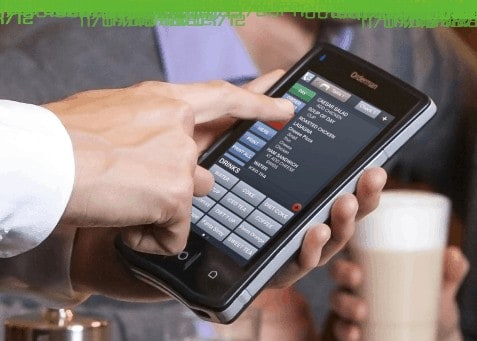
Aloha’s parent company—NCR—sells various solutions, Aloha being just one of them.
As we understand it, you must purchase these additional systems and integrate them in order to use the functionality they offer.
Aloha is a standalone solution with a static feature set. We were able to dig up a list of features from a press release put out by NCR.
What Aloha Does Include
According to that press release and a few concrete bits information from its website, Aloha includes the features listed below.
Fixed and mobile restaurant POS capabilities
- Payment processing
- Mobile alerts
- Training order mode for new employees
- “Advanced” reporting
- Takeout functionality (the ability for an employee to manually enter an order and mark it as “for takeout” rather than for a table in the restaurant)
- Centralized site management (this is too vague to understand what it refers to)
- Menu management
- Automated kitchen scheduling
- Customer profiling
What Aloha Potentially Does Not Include
Looking at NCR’s other offerings, we can presume that Aloha does not include the features below, out of the box.
- Marketing capabilities
- Inventory management features
- Loyalty programs
Multi-store management
- Employee management
- Split checks for dine-in customers
- Automated payroll functionality
- Even more advanced reporting
- Customer rewards and gift cards
- Complaint resolution features
- Mobile and online ordering
- Advanced order routing
- Multi-language settings
WINNER
We call it a draw. Both systems lack certain basic features and deliver a poor user experience on their respective websites. They neither list pricing nor full feature sets, which could dissuade many potential customers from investigating their respective systems.
NOTE: The lack of transparent pricing is why you won’t see a “Pricing” section in this article.
Customer Support
When a restaurant’s POS system crashes or starts to malfunction, the entire operation is affected. That’s why it’s so important to deliver reliable POS customer support—especially for eating establishments.
Poor customer support leaves a lasting mark on the customer who had a poor experience. Subpar customer support can easily ruin a brand’s reputation.
Toast’s Customer Support
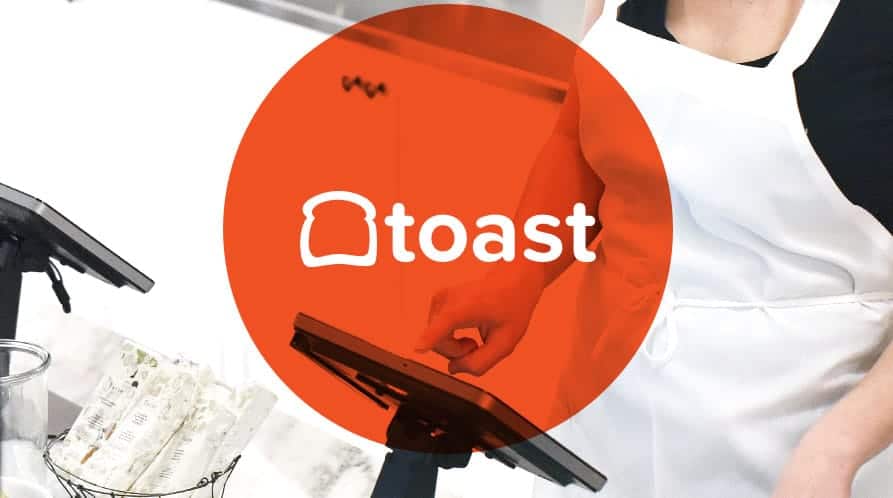
Dissatisfied customers report that customer support can be difficult to reach.
However, all in all, Toast’s customer support presence appears to be solid and reliable.
We compiled user ratings from reputable user review sites to understand customer sentiment around customer support and other system variables. Our research revealed that Toast has an aggregate user rating of 8.3 out of 10 in the customer support category.
Aloha’s Customer Support
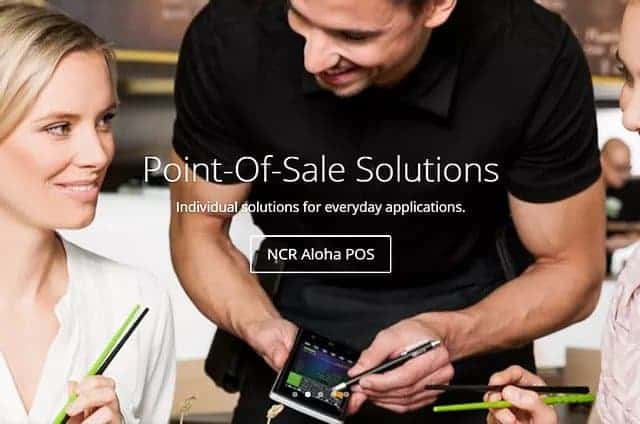
According to users, Aloha’s support team is not educated on all system features and can’t solve many user-reported issues. Some users report having to wait up to a week for a resolution to their problem.
Our compiled user ratings revealed that Aloha has an aggregate user rating of 6.7 out of 10 for customer support.
WINNER: Toast
Ease of Use
Here, again, we compiled user ratings and calculated an aggregate score across three top user review sites. Here is what we found:
Toast Ease of Use Rating: 8.9 out of 10
Aloha Ease of Use Rating: 8.2 out of 10
WINNER: Toast
All Features and Functionality
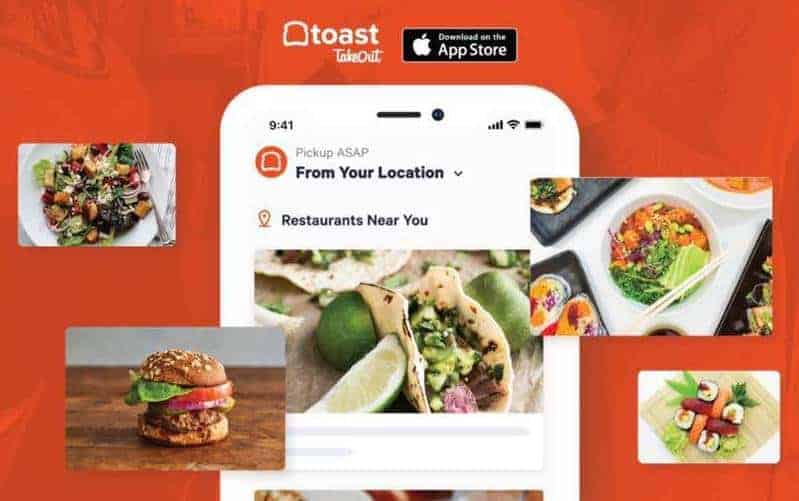
Toast Features and Functionality Rating: 8.1 out of 10
Aloha Features and Functionality Rating: 7.4 out of 10
WINNER: Toast
Value for the Money
Another aggregate user score.
Toast Value for the Money Rating: 8 out of 10
Aloha Value for the Money Rating: 6.6 out of 10
WINNER: Toast
Overall System Rating
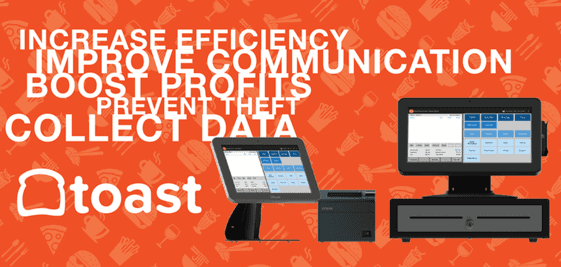
Overall system rating is a numeric representation of the quality of software. It is based on several criteria that are used to determine the value of software. Embold rating is calculated on every level: for a function (or method), a component, a package and the whole software. This allow us to compare the quality of our software with other software in a quick way.
Customers also provide rating for the solution. This include every segment like price, features, product & services, customer service etc. Each of these segment has its own set of criteria and a unique rating methodology. In order to get a good overall rating, the software/service must have met and exceeded all of the criteria in all segments.
St. Luke's 'A+' long-term rating reflects its robust operating metrics, solid financial profile and market position as a leading acute care provider with significant local patient market share in Boise, Idaho. Fitch expects St. Luke's cash flow margins to remain healthy in the near term, allowing it to maintain unrestricted liquidity through the Outlook period when capital spending will be elevated due to the multi-year DCIP project.
Toast Overall Rating: 8.7 out of 10
Aloha Overall Rating: 7.7 out of 10
WINNER: Toast
Toast vs. Aloha: POS Hardware
Every POS software system needs POS hardware components to carry out the commands the software sends.
Toast POS Hardware
The POS hardware Toast sells can be purchased as pre-set bundles or individual components.
Aside from its Starter Kit, which starts at $999, pricing is not listed on the website. For all other hardware, you must contact sales for a quote. However, their selection is vast, giving users many options.
Aloha POS Hardware
Aloha sells a surprisingly sparse selection of POS hardware, all manufactured by NCR. The only components they sell are:
- POS terminals
- Handheld devices for front-of-house staff
- Kitchen bump bars
- Kitchen touchscreen monitors
- Data servers
- Thermal printers
- Self-serve kiosks
Not surprisingly, none of their hardware has listed pricing associated with it. There are no hardware bundles to choose from.
WINNER: Toast wins for providing more options as well as bundles.
Is Toast or Aloha Your Better Bet?
Toast outscored Aloha in six of eight comparisons above. The other two resulted in a draw.
That doesn’t mean Aloha is a poor system. Large restaurant chains with many locations can add extra NCR modules and manage their entire restaurant empire from one system.
Toast is better suited for smaller restaurants, cafes, coffee shops, bars, and bakeries. From what we read, it’s significantly cheaper. Plus, it beat Aloha in our comparisons. It would be a better fit for these types of establishments.
Continue researching and evaluating systems before rushing into a decision. Read user reviews. Be sure to ask for a trial or a demo before committing to any system.
If you want to investigate other restaurant POS systems, we recommend you take a look at our TouchBistro POS review. You should also check out our Upserve POS review. These are two more industry-leading restaurant POS systems.

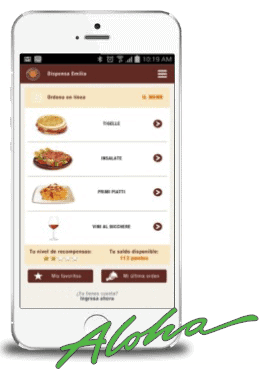 Aloha Ordering Capabilities
Aloha Ordering Capabilities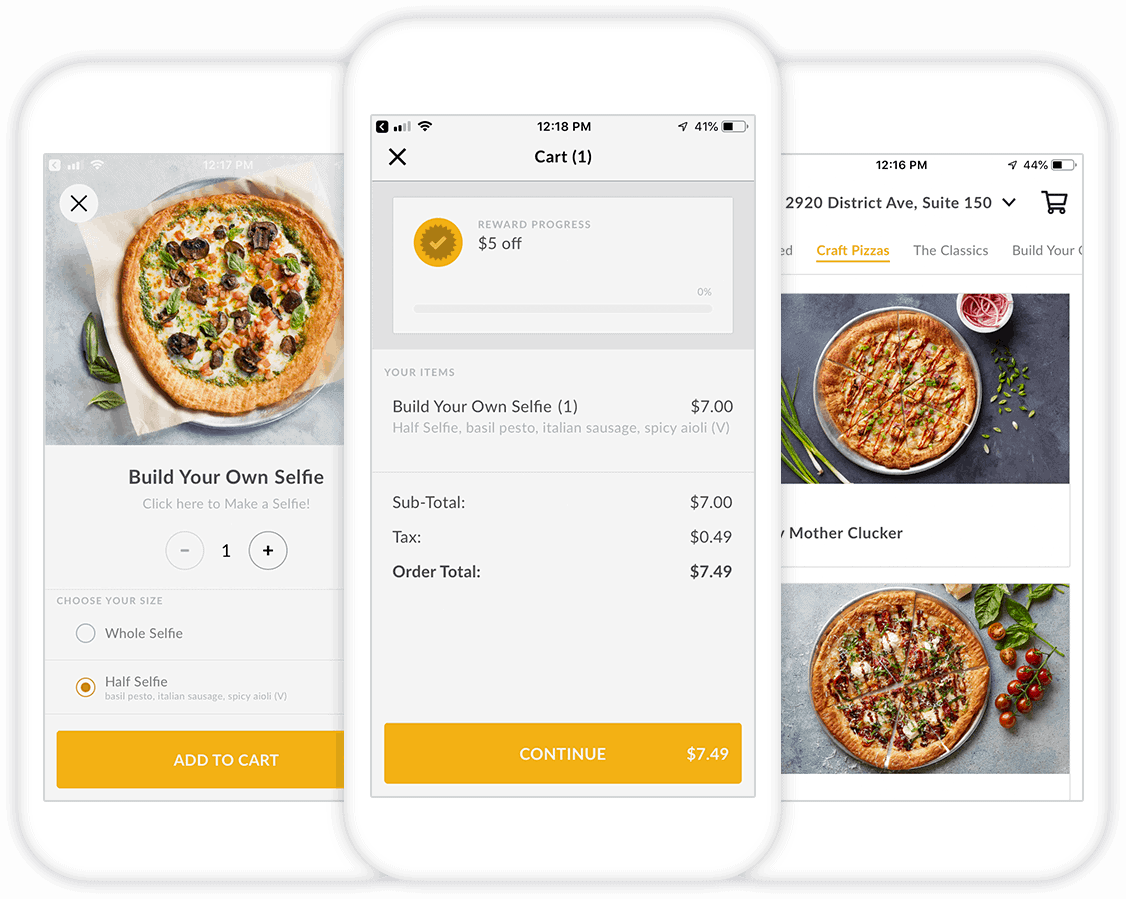 Online ordering capabilities
Online ordering capabilities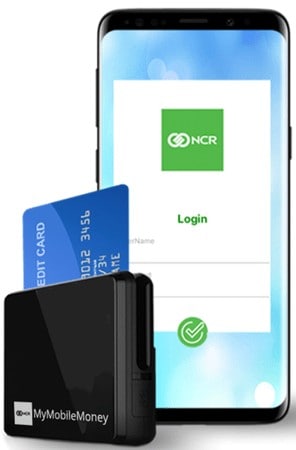 Fixed and mobile restaurant POS capabilities
Fixed and mobile restaurant POS capabilities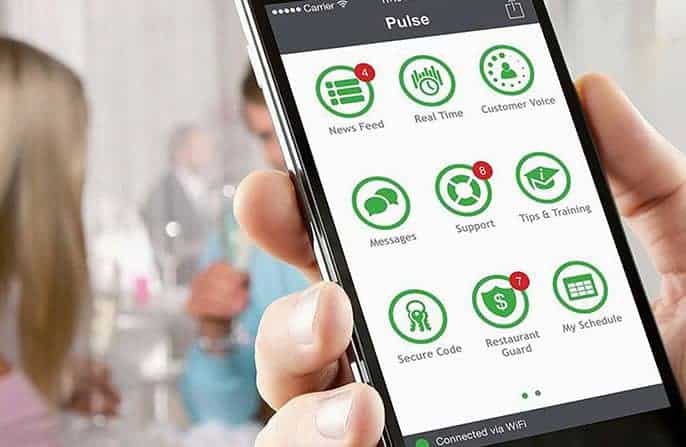 Multi-store management
Multi-store management